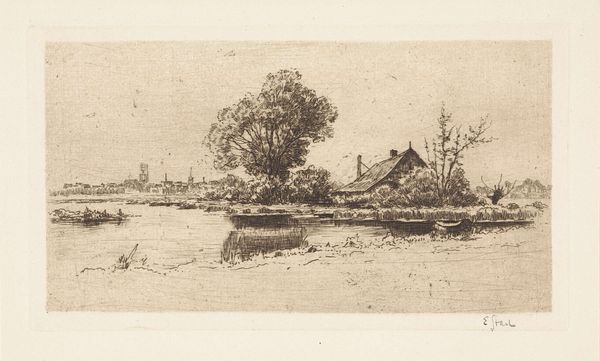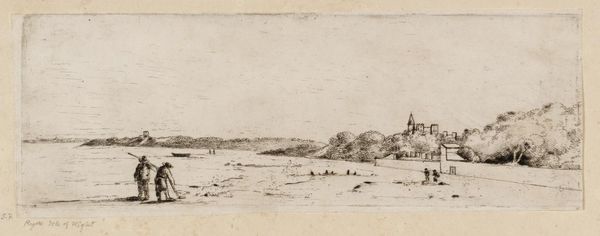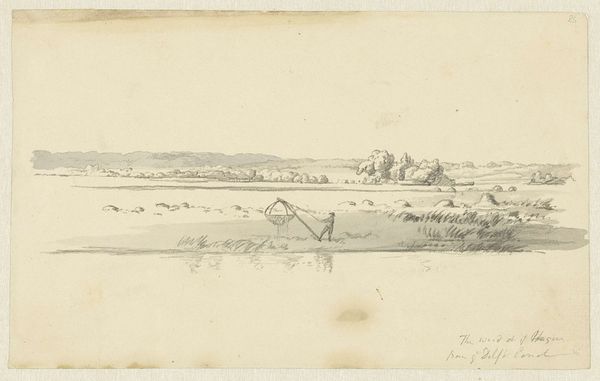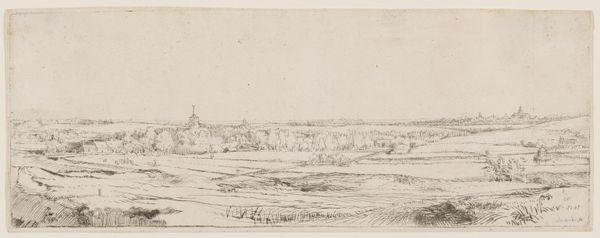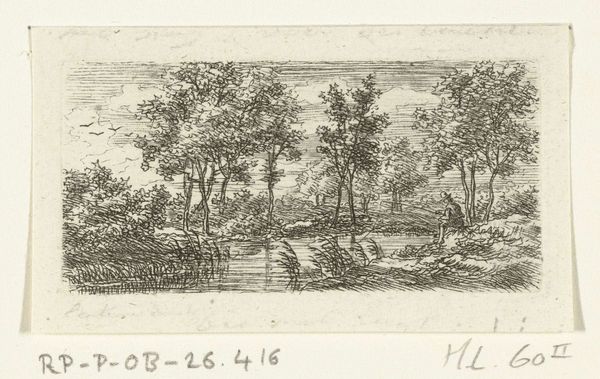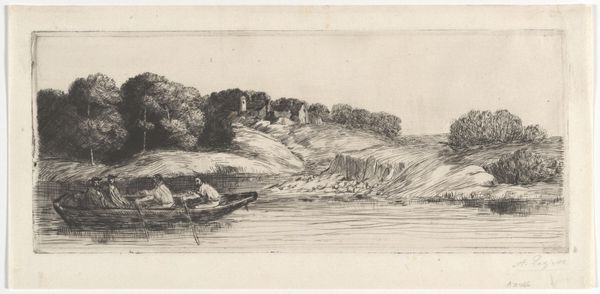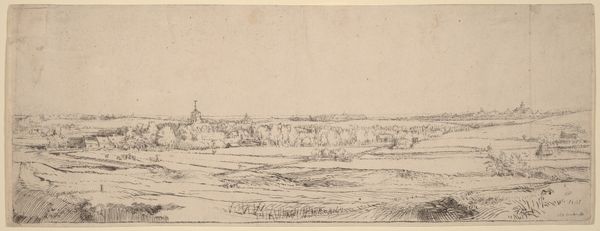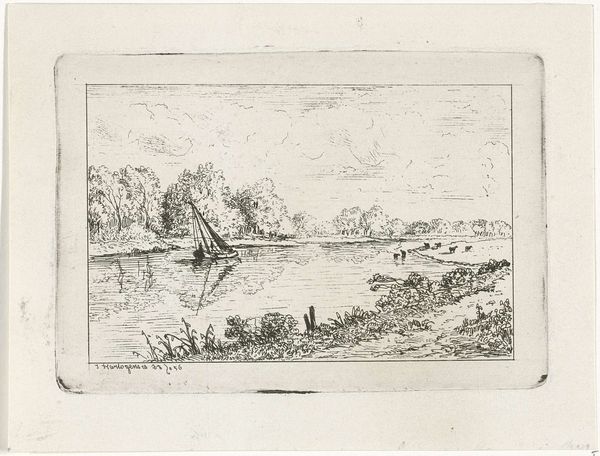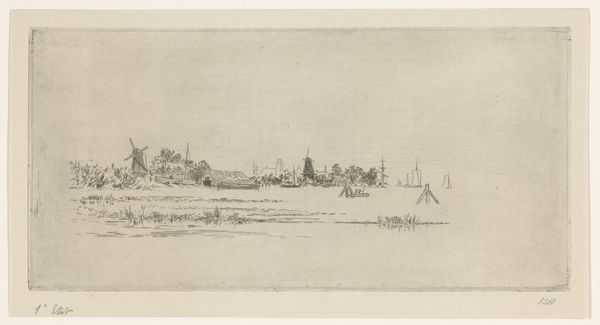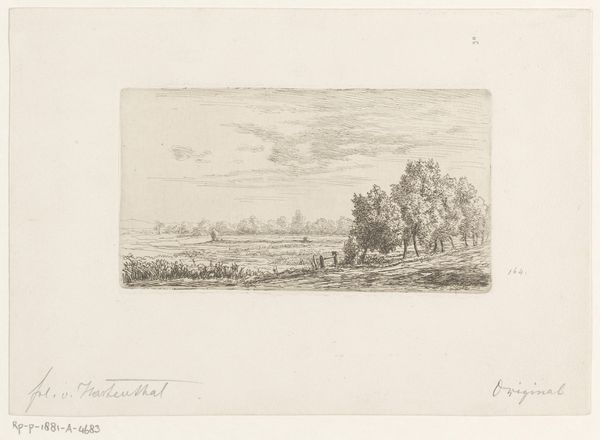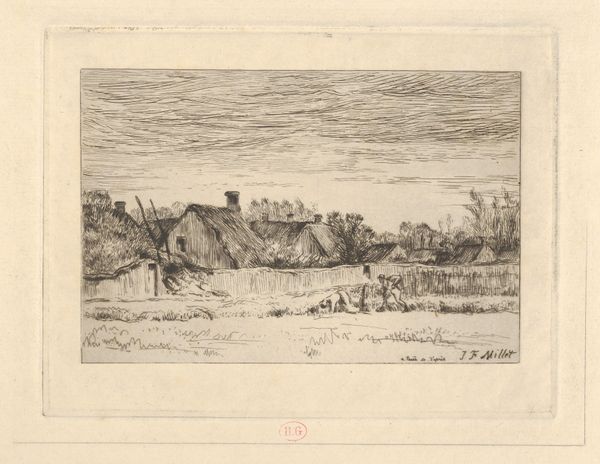
print, etching
#
light pencil work
#
quirky sketch
# print
#
pen sketch
#
etching
#
pencil sketch
#
old engraving style
#
landscape
#
personal sketchbook
#
pen-ink sketch
#
pen work
#
sketchbook drawing
#
sketchbook art
#
realism
Dimensions: height 136 mm, width 214 mm
Copyright: Rijks Museum: Open Domain
Curator: Right, let’s delve into this understated print. This is "Oever van de Theems bij Sonning" or "Banks of the Thames at Sonning", etched by Sir Francis Seymour Haden sometime between 1863 and 1867. It’s part of the Rijksmuseum’s collection. What strikes you first about it? Editor: It feels intimate, like a glimpse into someone's personal sketchbook. The scratchy lines and the way the buildings kind of melt into the trees... It has this raw, immediate quality that's really appealing. But something about that dense, dark area by the water…almost oppressive. Curator: Yes! That immediacy is key. Haden was a surgeon by profession, etching was almost an obsession, something to capture a fleeting moment or feeling. I think those darker areas serve almost like emotional anchors, a visual representation of nature's depth. Notice the script on the left side of the work, an unusual inclusion for such a sparse scene. Editor: The handwritten note is fascinating. It brings such context to the image. It almost resembles characters themselves; script, symbol, and line seem to co-exist and reflect each other! Did the Thames at Sonning hold any particular symbolism for that period, do you think? Was he alluding to it in a particular way, beyond his immediate surroundings? Curator: Haden was inspired by Whistler and also by Rembrandt's prints; Whistler was fond of the Thames, particularly its industrial side. Sonning would have been a quiet contrast. It could represent the allure of nature's permanence against industrialisation; to me, it symbolises respite, perhaps an antidote to modern anxieties through natural symbolism. He immortalises this quiet riverside. Editor: An antidote, exactly. A personal act of preservation through art... It resonates even now. Thank you, that gives the image so much more resonance. Curator: Indeed. Art acts a reflection; the way it pulls you in is a very subjective matter, too.
Comments
No comments
Be the first to comment and join the conversation on the ultimate creative platform.
